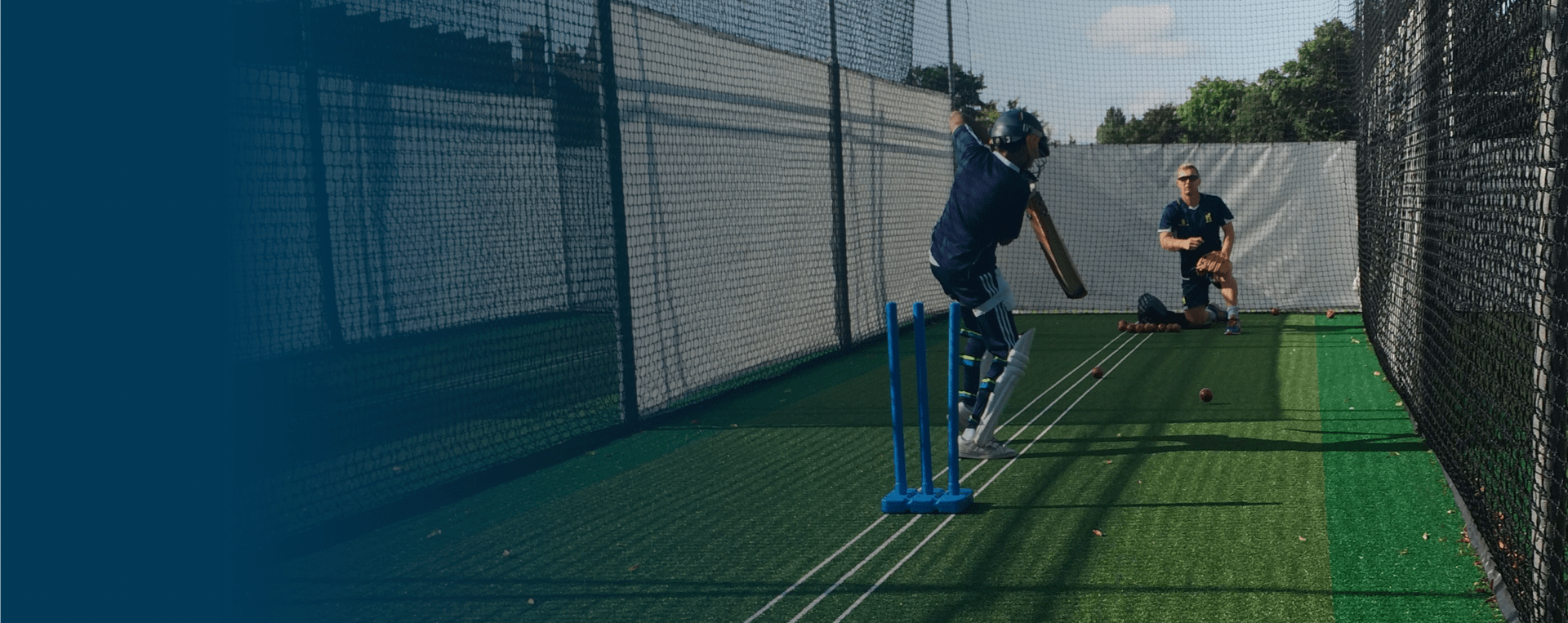
Concrete Kerbs vs Timber – Staked Board Edges
In the first of a series of blogs examining the pros and cons of various components of non-turf pitch facilities, business development manager Anthony Burton looks at the benefits of concrete kerbs vs timber or recycle board edging.
One of the things that sets total-play non–turf cricket practice facilities apart from our competitors is that our systems are installed with a concrete perimeter kerb as standard. Concrete kerbs are not the cheapest option, however, there are several reasons we chose to make this part of our specification rather than an optional extra:
No Rotting
A key benefit of perimeter concrete kerbs is that they remove the need for an additional, internal timber frame as part of the base. As this timber rots, it can result in the creation of voids that are time consuming to rectify, as the edges need to be removed and backfilled before they are replaced. With concrete kerbs the sub-base is seamless right up to the concrete edges; meaning voids are unlikely to form. Not only does this mean re-levelling work is likely to be required far less frequently but, when surface levels do need attention, it will be a far quicker and less complex operation.
Precision Installation
Due to the nature of concrete and its manufacture, concrete kerbs are of uniform size and quality – on the other hand, with timber, there is always the capacity for irregularities in the natural material that can cause inconsistencies and weak points. When added to the fact that we can install concrete kerbs using laser guided equipment, which is not possible with timber, you can rest assured that your system is based on a foundation that far more precise and uniform than is possible using traditional timber edges.
Site-Specific Adjustments
The use of concrete kerbs over timber edges also allows us to ensure that the facility is built to suit the specific challenges of the site; our match pitches have minimum stone depth of 150mm, and our systems can need to have up to 300mm of stone dependant on site soil type and condition (greater than the typical 100mm depth on most NTPs). Surface gradients and levels can also be effectively controlled and built to suit the on-site ground conditions.
Long-Term Stability
Even if treated, due to its organic nature, timber will eventually decompose; leading to loss of surface levels and carpet tension. Concrete kerbs, meanwhile, offer long-lasting retention and rigidity – hence their widespread use in general civil engineering at the edge of pavements, driveways and larger sports facilities inducing tennis and hockey / football pitches.
This long-term stability is compounded by concrete kerbs being held in place using a concrete ‘haunching’ on both sides; whereas the wooden ‘pegs’ used to secure timber edges can also rot, causing the edges to shift and resulting in loss of surface levels which, in turn, will need expert intervention to rectify. Last, but by no means least, with concrete kerbs we are able to compact the stone of the sub-base against a rigid, firm edge rather than loose timber resulting in a more densely packed, and therefore more stable, foundation for shock pads and carpets.
Long-Term Savings
The final key benefit involves the lifecycle of carpet which, no matter how well a system is maintained, will eventually need replacing due to wear and tear. Concrete kerbs will outlast the lifecycle of a synthetic carpet several times over, whereas timber edges may need replacing before a carpet is due upgrading.
When the time comes to replace the carpet itself, where timber edges are used these will need removing and replacing before new carpet is fitted; an expensive process due to the man hours involved and replacement components. Concrete edges, meanwhile, can see carpets replaced in a fraction of the time, meaning these essential long-term maintenance jobs are far less expensive.
A Sound Investment
All things considered, spending a little more now on concrete kerbs rather than timber edging for your non-turf practice facility will pay dividends in the long run; both in terms of performance and value for money. In fact, we’re so confident in the advantages that we offer a 30 year warranty on our concrete kerb bases; far greater than could be offered for systems using degradable edging materials.




